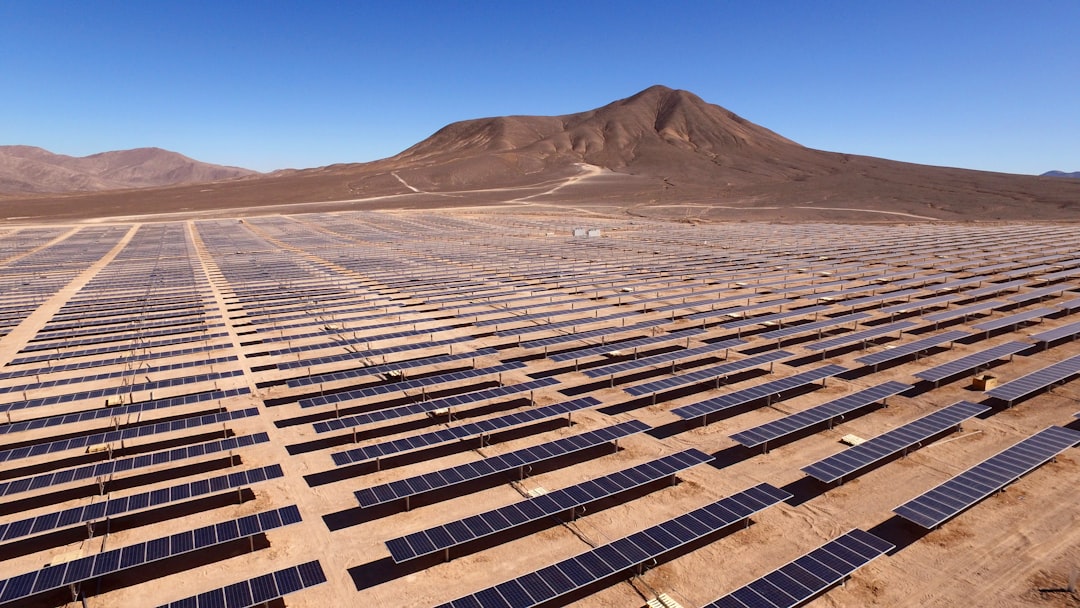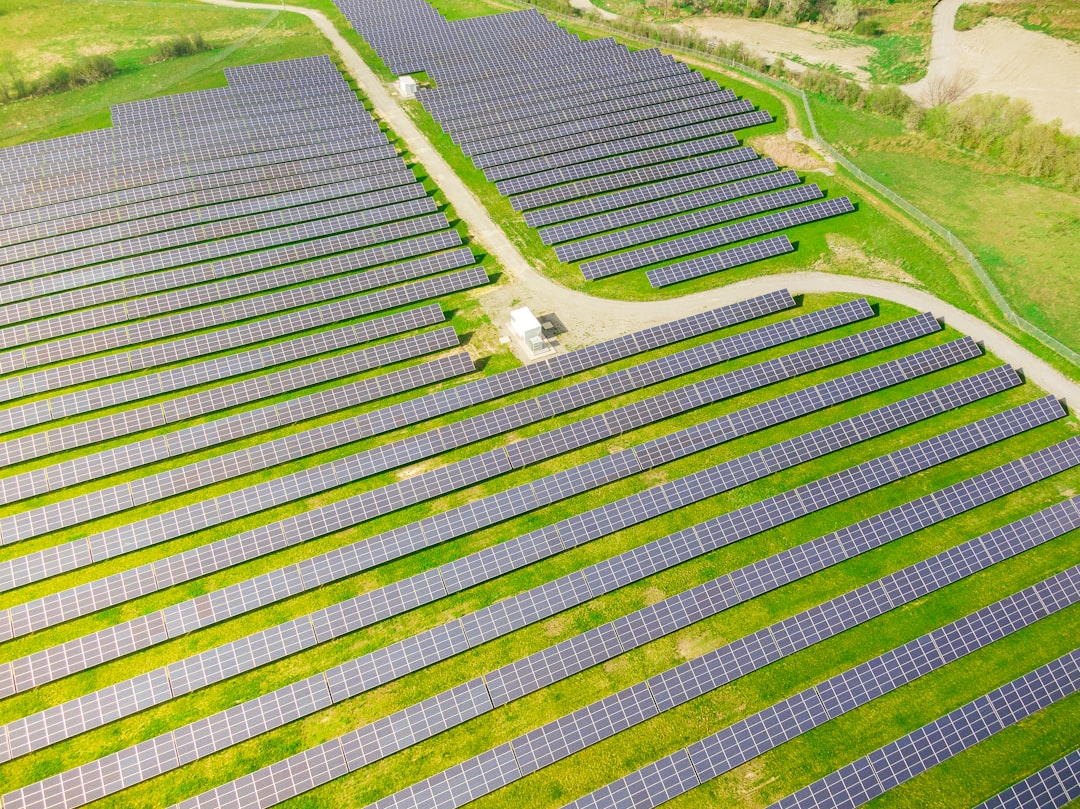The NanoCrystal
A nanocrystal is a tiny crystal that is only about one-millionth the size of a human hair. Because of their small size, they can be used as the basis for the creation of many different materials. In a typical photovoltaic cell, a thin layer of titanium dioxide is coated with a thin layer of silver. When light hits the titanium dioxide, electrons move to the silver. This can be used to create an electric current. The problem with this setup is that it only creates electricity when light hits it. This is not good for places that do not have sunlight, or for places that are dark.
The solution is to use a nanocrystal. Rather than having a thin piece of silver, the nanocrystal has a tiny core that is made of silver and a shell that is made of titanium dioxide. This allows the nanocrystal to absorb light even when the sunlight is not present. When light hits the titanium dioxide shell of the nanocrystal, electrons flow to the silver core to create electric current. This means that the nanocrystal can be used for many different applications. This technology harvests and converts sunlight into electricity. It is best suited to applications where more power is required or where solar energy is abundant. The devices work by harvesting photons from sunlight, using them to excite electrons in the nanocrystals. The electrons then move to the outside of the crystal where they are collected and converted into electrical energy.
1. The fundamental components of the nanocrystal are a silver core, a titanium dioxide shell, and an energy source.
2. The silver core is covered with a titanium dioxide shell. The titanium dioxide is used to block any light that does not have an energy level high enough to excite electrons in the silver core.
3. A nanocrystal is placed in a solution. In this case, the solution is water. It is important that the water be as pure as possible.
4. The nanocrystal is exposed to light.

Geometric Structure of the Nanocrystal
The nanocrystal has a geometric structure that can be thought of as a collection of atoms that are arranged in a regular pattern. You can think of it as a tiny crystal that is much smaller than the size of a human hair. The nanocrystal is surrounded by a layer of materials that can conduct electricity. It contains an electrical circuit that allows electrons to move from the nanocrystal to the surface. When light hits the nanocrystal, the electrons are knocked out of the crystal and they move to the surface.
The nanocrystal, when viewed from its side, appears to have a hexagonal structure. The atoms at the edges are oriented so that they can be manipulated by electric and magnetic fields. When an electric field is applied to such a crystal, the atoms at the edges move towards the positive end of the field, causing the crystal to grow. The crystal’s shape grows in a hexagonal fashion as the atoms move around the edges. The internal structure of the crystal is not visible to the naked eye, but can be examined using an electron microscope.
The nanocrystal contains a silver core, a titanium dioxide shell, and an energy source. The silver is used to create the electric circuit. The titanium dioxide is used to reduce the light energy level to a level that will excite electrons in the silver core. The energy source is necessary for the nanocrystal to have energy to excite electrons in the silver core.
The nanocrystal has a geometric structure that can be thought of as a collection of atoms that are arranged in a regular pattern. You can think of it as a tiny crystal that is much smaller than the size of a human hair.
Photons and NanoCrystals
Photons are the elementary particles of light. They move at the speed of light, and carry energy (which is mass times the speed of light squared). They exist in all forms of electromagnetic radiation, including radio waves, microwaves, infrared, visible light, ultraviolet, x-rays, and gamma rays.
Nanocrystals are crystalline structures that contain several hundred atoms arranged into a regular geometric structure and have a diameter of less than 100 nm. These structures have an extremely high surface area to volume ratio and can be dispersed into an electric field to generate an electric current. Nanocrystals are often considered to be artificial atoms.
The energy level of a nanocrystal is determined by the number of electrons that are added or removed from the crystal, which is done through a process called doping. The magnitude of the electric current produced by a nanocrystal is determined by the amount of energy, or “frequency”, that the electrons absorb.
Photon Simulation
The solar power from an artificial nanocrystal is due to the photon simulation property of the artificial crystal. The solar power is more than the solar power from a nanocrystal with a large surface area. This is because the surface area of a nanocrystal is always much smaller than the volume of the nanocrystal, so the photon simulation becomes stronger as the volume of the nanocrystal decreases. For this reason, the solar power from a nanocrystal is different from the solar power from the nanocrystal with a large surface area.
Photons are packets of energy that are emitted as a result of a nuclear reaction. The energy of a photon is defined by its wavelength. As an electron (a subatomic particle) emits or absorbs energy to become excited, it can emit photons of a specific frequency. A photon can also be absorbed by a particle in an excited state, thereby transforming the energy into electric energy. A photon is said to be “simulated” into an electron if it is accelerated to a high energy state and then is absorbed by a subatomic particle. The energy it possesses is then transferred to the subatomic particle, which recoils (takes energy in the form of kinetic energy) and emits a new photon. This is the electro-magnetic equivalent of a photon being “simulated” into an electron, and is a result of the photovoltaic effect. Note that the photon is the original energy.
The electron is the energy that has been “simulated” into it.
A photon can also be “simulated” into an electron by the use of an electric field. When a photon is exposed to an electric field, the electric field can make the photon into an electron. This is not a good way to simulate a photon because it is not a direct photo-electric effect.
Photon simulation
The solar power from an artificial nanocrystal is due to the photon simulation property of the artificial crystal.

Higher Performance of NanoCrystalline Solar Power
Nanocrystalline solar power provides more energy than petroleum because it is a renewable energy source that is environmentally friendly. The reason why it is so much more efficient is because it is a nanostructure that allows electrons to move easily through the material. The amount of energy provided by nanocrystalline solar power is significantly higher than the energy provided by petroleum. This is because sunlight can be harnessed in a nanocrystalline solar cell to generate electricity, and the structure of nanocrystalline solar cells can be designed to generate more energy.
Nano-sized solar cells are actually quite old, but they’ve gained popularity in recent years due to the fact that they are much more efficient and can be integrated into a great many different types of devices. For instance, they can be used in photovoltaic cells, which convert solar power into electricity as well as in thermoelectric generators, which convert heat into electricity. In addition, nanocrystalline solar cells are also much cheaper and far less toxic than traditional solar cells, which makes them a really viable alternative to gasoline, oil, and coal.
Because the nanocrystalline solar cells have a much higher surface area, this mean more sunlight can be absorbed per square foot used. This translates into greater energy production from the same amount of sunlight. Whereas traditional solar cells absorb only the light with energy just above the bandgap of the solar cell, nanocrystalline solar cells absorb light at energies well below the bandgap. This means they can absorb more light.
The Transportable Solar Cell
Solar power is extremely difficult to collect because there is a lot of sunlight, and it is often obscured by clouds, trees, buildings and other objects. To overcome this, researchers have developed solar cells that use electro-magnetic effects. For example, sunlight is absorbed by nanocrystals made of magnesium-selenide, which then emits a photon that gets absorbed by another nanocrystal and creates electricity. Because of the nanocrystal structure, a single photon creates a large amount of electricity, making this technology extremely efficient. However, these solar cells still need to be improved before they can be used in the real world.
1. A solar cell is an electronic device that converts light into electricity.
2. The basic structure of a solar cell is a rectifying junction.
3. The rectifying junction is a P-N junction, a form of junction in which the concentration of positive and negative charges is different.
4. If the concentration of positive charges is greater than the concentration of negative charges, then electrons will flow in the direction of the higher concentration of positive charges.
5. If the concentration of negative charges is greater than the concentration of positive charges, then electrons will flow in the direction of the higher concentration of negative charges.
Solar Farming In East Africa
The nanocrystals also have a much higher efficiency rate than traditional silicon solar panels, which can be up to 30%. The nanocrystalline solar cells can be made from a variety of materials, and they can be made in any size. The efficiency of the cells, however, is directly proportional to the size of the nanocrystals. The bigger they are, the more efficient they are. The nanocrystalline solar cells are small, about the size of a postage stamp, but they are far more efficient and thus can provide more energy. The use of nanocrystalline solar cells can increase the energy available by many times, from the amount available from the surface of the earth to the amount of energy in the sun.
The secret to concentrating sunlight is to work with a material of nanocrystalline geometry, where the atoms are organized in an array that is much smaller than the wavelength of sunlight. To make electricity from the sun, you simply sandwich a nanocrystalline material between two electrodes, and then apply an electric current. This device is called a nanocrystalline solar cell, or a nanocrystalline photovoltaic cell.
To build a solar farm, you can set up multiple solar panels in a grid pattern. The panels are connected to a power source, which sends electricity to an inverter. The inverter converts the direct current electricity into alternating current electricity, which is then used to power a wind turbine or generator.

Science And Green Chemistry
The Sun is a fusion reactor, and it has been for billions of years. It produces energy via fusion, which is a process of combining energy via the nucleus of a heavy atom into a lighter atom. The Sun’s core is made of two parts, a solid part and a liquid part. The solid part of the Sun’s core is made of iron, and the liquid part of the Sun’s core is mostly hydrogen. The Sun’s core is constantly bombarded by constantly travelling charged particles, which results in the fusion of hydrogen atoms into helium. This is what powers our Sun, and what powers our planet.
The Earth is a large ball of rock that orbits the Sun at about 67,000 miles a second. It takes the Earth approximately 365 days to complete one orbit around the Sun. In the Sun’s core, hydrogen nuclei It turns out that hydrogen does not exist in nature. It is a non-natural element. Hydrogen atoms are the smallest particles of matter. They are composed of a proton and a nucleus. The protons are positively charged, and the nuclei are positively charged.
The positive protons attract the positive electrons, and they repel the negative nucleus. This creates an electrical charge.
In the 17th century, Robert Boyle discovered that bacteria can turn carbon dioxide into energy. He found that if you had a solution of water and living bacteria, you could boil a solution of water by adding a solution of carbon dioxide. Bacteria can turn carbon dioxide into energy because they can catalyze the reaction of water and carbon dioxide. Bacteria can turn carbon dioxide into energy because they can catalyze the reaction of water and carbon dioxide. This is called the Krebs cycle. The bacteria take in the carbon dioxide, using it as a source of energy. Then, they combine water with the energy to form protons and electrons. Electricity is everywhere.
It is a form of energy.
To be able to use electricity, you have to make it into a form that you can use. This means that you have to use a circuit.
The two other things that you need are a positive and a negative electrode. The positive electrode is where the electricity is. It is a wire. When the electricity is created, the wire gets charged. The negative electrode is where the electrons go. It is a metal or metal-like substance. When the electricity is created, the metal or metal-like substance gets charged.

How To Become A Technology Inventor
Being an inventor is the complete opposite of being a science geek. You will need to know a lot about science and technology because you will need to develop ways of making things that are impossible for us to find in nature. You will need to understand a lot about materials science and engineering, and keep up to date with all the latest research.
There are many ways to become an inventor. Some of the methods include:
• Embrace the idea of a technology inventor.
• Create your own technology and patent it.
• Research existing technologies and modify them.
• Create new technologies and patent them.
• Establish a team of researchers and help them develop new technologies.
• Create a new company and sell your technology.
Join Our Discord Here
Play Our NFT Games Here


